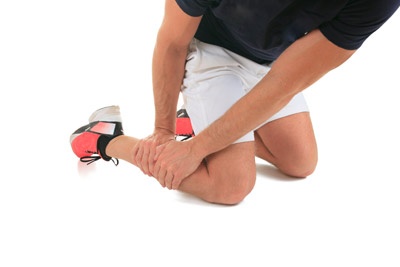By Brian Sutton MS, MA, PES, CES, NASM-CPT
Most people are concerned with not getting enough exercise. But for some individuals the opposite may hold true. Some individuals exercise to extremes and may inadvertently be damaging their body. The old saying, “No Pain No Gain” can’t be farther from the truth. Current research clearly demonstrates that too much aerobic exercise may cause harmful effects such as impaired immune function, inadequate energy levels, muscle cramps, reduced peripheral vascular resistance, and overtraining.
Impaired Immune Function
According to Nieman et al., the immune system exhibits many changes after prolonged intense aerobic exercise (1). A window between three and 72 hours following intense aerobic activity leaves the immune system suppressed and stressed and consequently the body is more susceptible to bacteria and infection, particularly respiratory infection (1). Additionally, an athlete exercising in a carbohydrate-depleted state elicits increases in circulating stress hormones (2). However, other factors such as mental stress, lack of sleep and loss of bodyweight are also factors for impaired immune function for endurance athletes (1,2). Nieman et al., concludes that the risk of respiratory infection may be increased when the endurance athlete goes through repeated cycles of heavy exertion, has been exposed to novel pathogens, and has experienced other stressors such as lack of sleep, severe mental stress, malnutrition, or loss of bodyweight (1).
Low Energy Levels
Many marathon runners (and other endurance athletes) often follow a low calorie diet. The three most common reasons marathon runners reduce energy (caloric) availability is; to modify body size for improving performance, suffer from an eating disorder, or inadvertently do not match energy intake to activity-induced energy expenditure (3). Consequently, markedly low energy availability impairs reproductive and skeletal health (3). Thus, it’s not surprising that low energy availability, reproductive disorders, low bone mineral density, and stress fractures are more common in female than male athletes (3).
Muscle Cramps
Marathon runners often experience muscle cramps in their legs. According to Schwellnuss, muscle cramps are associated with an involuntary, painful contraction of skeletal muscle during or immediately after exercise (4). While the exact mechanism for causing muscle cramping is not known, several factors are influential including, a history of muscle cramps, and long-duration high-intensity exercise such as running a marathon or competing in triathlons (4).
Reduced Peripheral Vascular Resistance
It is not uncommon to witness an endurance athlete collapse at the end of a long and grueling race. A majority of endurance athletes that collapse at the end of the race have postural hypotension (blood pressure usually < 100mm Hg) with unexpectedly low heart rates (<100 bpm) (5). The cause of the postural hypotension appears to be attributed to physiological changes induced by long duration aerobic exercise that maintain a state of abnormally low peripheral vascular resistance (5).
Overtraining
Exercise and sport training when performed correctly result in improved health and performance. However, when an athlete is performing excessive amounts of training without proper rest and recovery, there may be some harmful side effects. Some of these side effects may include decreased performance, fatigue, altered hormonal states, poor sleeping patterns, and mood disturbances (6).
See this blog on overtraining for a deeper dive!
Summary
As you can see, too much aerobic exercise can result in certain health risks such as impaired immune function, muscle cramps, low energy levels, and reduced peripheral vascular resistance. Additionally, when training for endurance events such as marathon and triathlon, endurance athletes may inadvertently overtrain resulting in a decrease in performance, hormonal imbalances and mood disturbances. When designing exercise programs for endurance athletes, it is equally important to factor in rest and recovery periods. In addition, instructing athletes regarding proper nutrition guidelines and adequate caloric intake will help them avoid decreases performance, low energy levels, stress fractures, reproductive disorders, and low bone mineral density.
References
1. Nieman DC, Pedersen BK. Exercise and immune function recent developments. Sports Med. 1999;27(2):73-80.
2. Gleeson M, NiemanDC, Pedersen BK. Exercise, nutrition and immune function. J Sports Sci. 2004;22(1):115-125.
3. Loucks AB. Low energy availability in the marathon and other endurance sports. Sports Med. 2007;37(4-5):348-352.
4. Schwellnus MP. Muscle cramping in the marathon: Aetiology and risk factors. Sports Med. 2007;37(4-5):364-367.
5. Noakes TD. Reduced peripheral resistance and other factors in marathon collapse. Sports Med. 2007;37(4-5):382-385.
6. Meeusun R, Duclos M, Gleeson M, Rietjens G, Steinacker J, Urhausen A. Prevention, diagnosis and treatment of the Overtraining Syndrome ECSS Position Statement ‘Task Force’. Eur J Sport Sci. March 2006; 6(1): 1-14.

















